#44-gun Frigate
Text
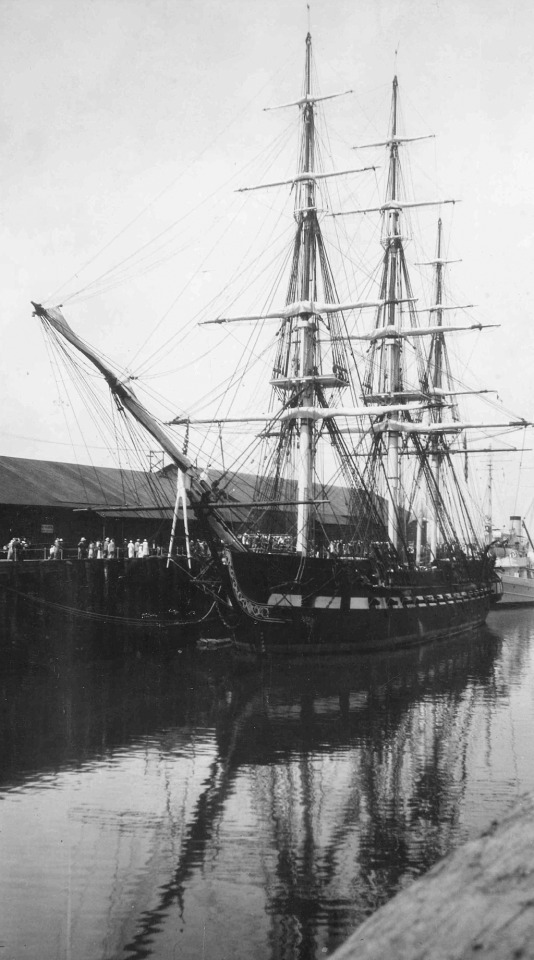
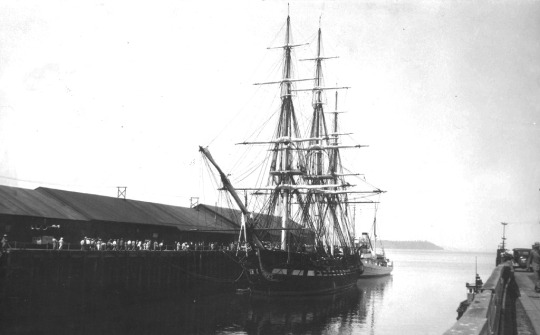
USS Constitution arrives in Everett, Washington on July 7, 1933. She was "at the foot of Hewitt Avenue in Everett and opens to visitors. Everett is one stop on a three-year U.S. tour made by the Constitution between 1931 and 1934, a goodwill trip on which the ship travels 22,000 miles and visits 91 ports. The ship's stay in Everett ends on July 14."
Photos courtesy of the Everett Public Library: link
#USS CONSTITUTION#Old Ironsides#United States Class#44-gun Frigate#Original 6 frigates#Sailing Ship#Warship#Ship#United States Navy#U.S. Navy#US Navy#USN#Navy#Everett#Washington#West Coast#July#1933#interwar period#my post
282 notes
·
View notes
Text

Door no. 16 and today a very old lady shows up - but please do not believe that she is harmless. Her name "Old Ironside" is not without reason. I think you know who you have here - of course it's USS Constitution
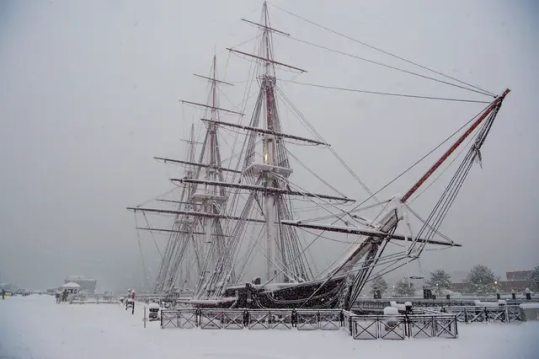
USS Constitution, photo by Petty Officer 3rd Class Skyler Okerman, 2022
A few more infos about her:
Constitution, warship renowned in American history. One of the first frigates built for the U.S. Navy, she was launched in Boston, Massachusetts, on October 21, 1797; she is the world’s oldest commissioned warship afloat. (The HMS Victory is older (1765) but is preserved in a drydock at Portsmouth, England.)
The Constitution’s overall length is 204 feet (62 metres), its displacement is 2,200 tons, and its gun range is 1,200 yards (1,100 metres). The bolts fastening its timbers and copper sheathing on the bottom were made by the silversmith and patriot Paul Revere. Rated as a 44-gun frigate, it ordinarily carried more than 50 guns and a crew of some 450. Original cost of the vessel exceeded $300,000, including guns and equipment. In the successful war against the Tripoli pirates (1801–05), the Constitution was Commodore Edward Preble’s flagship, and the treaty of peace was signed aboard it. During the War of 1812 it achieved an enduring place in American naval tradition. On August 19, 1812, commanded by Captain Isaac Hull, it won a brilliant victory over the British frigate Guerriere. Tradition has it that during this encounter the American sailors, on seeing British shot failing to penetrate the oak sides of their ship, dubbed it “Old Ironsides.” Several other victories added to its fame. When in 1830 the ship was condemned as unseaworthy and recommended for breaking up, public sentiment was aroused by Oliver Wendell Holmes’s poem “Old Ironsides.”
The ship was preserved, its rebuilding was provided for in 1833, and in 1844 it began a circumnavigation of the globe. The Constitution was removed from active service in 1882, and in 1905 it was opened to the public in Boston Harbor. After a restoration (1927–31) the ship was recommissioned; although it did not sail under its own power, it called at 90 American ports on both coasts and was visited by more than 4.5 million people. Since 1934 it has been based at the Charlestown Navy Yard (now part of the Boston National Historic Park).
In celebration of its bicentennial, the newly renovated Constitution sailed again in July 1997. It also sailed in August 2012 to mark the 200th anniversary of its victory over the Guerriere during the War of 1812.
#naval history#naval artifacts#uss constitution#18th century#19th century#age of sail#advent calendar#day 16
125 notes
·
View notes
Text

A decade of Republican hostility had taken a heavy toll on the navy, but seventeen ships still survived in 1812. Seven were frigates. The Constitution, President, and United States were rated at 44 guns; the Constellation, Chesapeake, and Congress at 36 guns; and the Essex at 32 guns. [...] The frigates were the heart of the navy. Inspired by Philadelphia shipwright Joshua Humphreys, the three heavy frigates—or “44s” as they were called—were bigger and sturdier than other frigates. They carried heavier guns (24-pounders rather than 18-pounders) and their thick hulls were better able to withstand enemy broadsides. In fact, they were “superfrigates,” capable of outfighting and outsailing other ships in their class and of outrunning anything larger.
— Donald R. Hickey, The War of 1812: A Forgotten Conflict
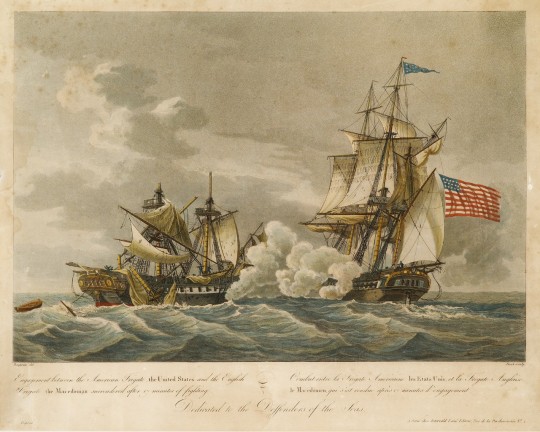
Engagement between the American Frigate United States and the English Frigate Macedonian Surrendered after 17 Minutes of Fighting, 1815 lithographic print (US Naval History and Heritage Command)
#War of 1812 Wednesday#war of 1812#age of sail#naval history#frigates#us navy#military history#uss united states#naval art#the sea#love the precise mention of '17 minutes' in the title of the print#someone is still mad about uss chesapeake#age of fighting sail#us history
51 notes
·
View notes
Text

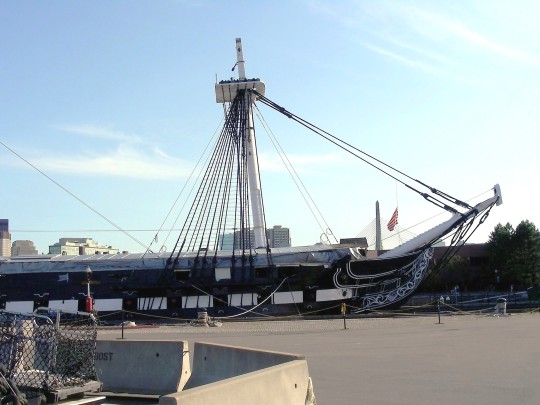
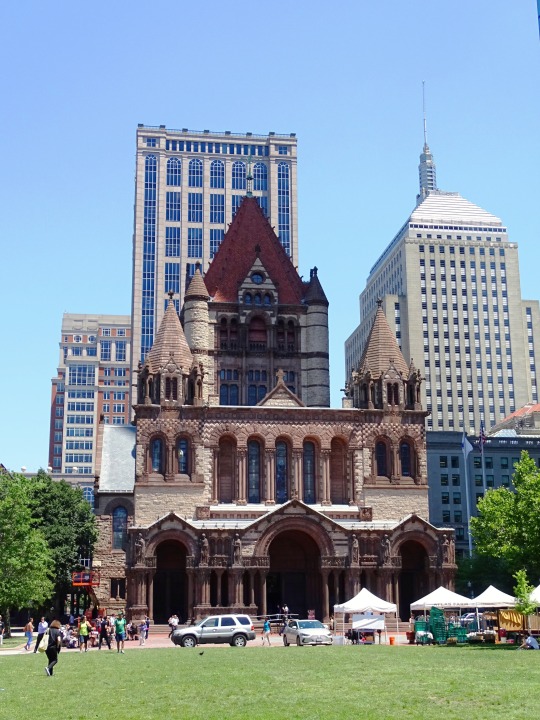
In Boston Harbor, the 44-gun United States Navy frigate USS Constitution was launched on October 21, 1797.
#Boston Harbor#US Navy frigate#USS Constitution#launched#anniversary#21 October 1797#US history#naval history#military history#ship#landmark#summer 2009#summer 2018#original photography#Trinity Church#travel#cityscape#Copley Square#architecture#tourist attraction
3 notes
·
View notes
Text
Next Week's Tumblr Top 5 Will Surely Put Us All to Shame.
I love that Shane's response to hearing the next Top 5 is about 'ships is, "I'm gunning for the Lusitania". Because 1. history nerd, and 2. I keep FORGETTING HE'S A HISTORY NERD BECAUSE I SEE PROFESSOR MCNASTY AS AN ENTIRELY SEPARATE ENTITY.
In the spirit of the joke, here's my Top 5 Historic Ships:
5. The Balclutha - built in Glasgow in 1886, this three-masted full rigged ship carried cargo all around the world before finding her way to San Francisco under the care of the San Francisco Maritime National Historic Park, where she is open to the public, sometimes for shanty sings. Yes, I've sung shanties on board this ship, because of course I have. This one's a sentimental choice, one of the few good things left about my hometown.
4. The Charles W. Morgan - the last wooden whaleship still afloat, built in New Bedford in 1841 and now a National Historic Landmark at the Mystic Seaport Museum. Kinda hard to miss when you come into the harbor and it's just the absolute epitome of New England salty sea-dog vibes. Also: blubber pots.
3. The USS Constitution - yeah, some people are going to say this is a real normie pick. But you gotta hand it to her, she's beloved for a reason. Built in 1797 in Boston, this 44-gun frigate was in service protecting the US for the better part of a century before being retired from service in 1881. And she's looked good the whole time. There's something special about seeing a ship this old fire off her cannons.
2. ORP Piorun - the other ships on this list are ships you can visit today; alas, this WWII N-class was scrapped in 1955, but its legend deserves to live on. This ship's Polish crew, powered by wodka and the fire of vengeance, had the absolute brass balls to chase down the Bismarck without waiting for reinforcements. You need to hear this tale told by someone slightly drunk and meme-poisoned, so here's LazerPig.
1. The Oseberg ship - excavated from a Norwegian burial mound in 1904, this ship was made somewhere around 800CE and buried sometime after 834 with a wide variety of grave goods that have told us a lot about Viking culture at that moment in time. There's nothing quite so sexy and absolutely terrifying as the curves on a Viking ship, let alone a Viking ship that has come back from the land of the dead, so this one's an easy number one on my list.
13 notes
·
View notes
Text
Events 10.21 (before 1950)
1096 – A Seljuk Turkish army successfully fights off the People's Crusade.
1097 – First Crusade: Crusaders led by Godfrey of Bouillon, Bohemund of Taranto, and Raymond IV, Count of Toulouse, begin the Siege of Antioch.
1392 – Japanese Emperor Go-Kameyama abdicates in favor of rival claimant Go-Komatsu.
1512 – Martin Luther joins the theological faculty of the University of Wittenberg.
1520 – João Álvares Fagundes discovers the islands of Saint Pierre and Miquelon, bestowing them their original name of "Islands of the 11,000 Virgins".
1600 – Tokugawa Ieyasu defeats the leaders of rival Japanese clans in the Battle of Sekigahara and becomes shōgun of Japan.
1774 – The flag of Taunton, Massachusetts is the first to include the word "Liberty".
1797 – In Boston Harbor, the 44-gun United States Navy frigate USS Constitution is launched.
1805 – Napoleonic Wars: A British fleet led by Lord Nelson defeats a combined French and Spanish fleet under Admiral Villeneuve in the Battle of Trafalgar.
1824 – Portland cement is patented.
1854 – Florence Nightingale and a staff of 38 nurses are sent to the Crimean War.
1861 – American Civil War: Union forces under Colonel Edward Baker are defeated by Confederate troops in the second major battle of the war.
1867 – The Medicine Lodge Treaty is signed by southern Great Plains Indian leaders. The treaty requires Native American Plains tribes to relocate to a reservation in the western Indian Territory.
1879 – Thomas Edison applies for a patent for his design for an incandescent light bulb.
1888 – The Swiss Social Democratic Party is founded.
1892 – Opening ceremonies for the World's Columbian Exposition are held in Chicago, though because construction was behind schedule, the exposition did not open until May 1, 1893.
1895 – The Republic of Formosa collapses as Japanese forces invade.
1907 – The 1907 Qaratog earthquake hits the borders of Uzbekistan and Tajikistan, killing between 12,000 and 15,000 people.
1910 – HMS Niobe arrives in Halifax Harbour to become the first ship of the Royal Canadian Navy.
1912 – First Balkan War: The Greek navy completes the capture of the island of Lemnos for use as a forward base against the Dardanelles.
1921 – President Warren G. Harding delivers the first speech by a sitting U.S. president against lynching in the Deep South.
1931 – A secret society in the Imperial Japanese Army launches an abortive coup d'état attempt.
1940 – The first edition of the Ernest Hemingway novel For Whom the Bell Tolls is published.
1943 – World War II: The Provisional Government of Free India is formally established in Japanese-occupied Singapore.
1944 – World War II: The first kamikaze attack damages HMAS Australia as the Battle of Leyte Gulf begins.
1944 – World War II: The Nemmersdorf massacre against German civilians takes place.
1944 – World War II: The city of Aachen falls to American forces after three weeks of fighting, the first German city to fall to the Allies.
1945 – In the 1945 French legislative election French women vote for the first time.
0 notes
Photo

The action of 13 January 1797 (known by the French as the Naufrage du Droits de l'Homme; "shipwreck [or sinking] of the Droits de l'Homme") was a minor naval battle fought between a French ship of the line and two British frigates off the coast of Brittany during the French Revolutionary Wars. During the action the frigates outmanoeuvred the much larger French vessel and drove it onto shore in heavy seas, resulting in the deaths of between 400 and 1,000 of the 1,300 persons aboard. One of the British frigates was also lost in the engagement with six sailors drowned after running onto a sandbank while failing to escape a lee shore.
The French 74-gun ship Droits de l'Homme had been part of the Expédition d'Irlande, an unsuccessful attempt by a French expeditionary force to invade Ireland. During the operation, the French fleet was beset by poor coordination and violent weather, eventually being compelled to return to France without landing a single soldier. Two British frigates, the 44-gun HMS Indefatigable and the 36-gun HMS Amazon, had been ordered to patrol the seas off Ushant in an attempt to intercept the returning French force and sighted the Droits de l'Homme on the afternoon of 13 January.
The engagement lasted for more than 15 hours, in an increasing gale and the constant presence of the rocky Breton coast. The seas were so rough that the French ship was unable to open the lower gun ports during the action and as a result could only fire the upper deck guns, significantly reducing the advantage that a ship of the line would normally have over the smaller frigates. The damage the more manoeuvrable British vessels inflicted on the French ship was so severe that as the winds increased, the French crew lost control and the Droits de l'Homme was swept onto a sandbar and destroyed.
https://en.wikipedia.org/wiki/Action_of_13_January_1797
0 notes
Text
An Enslaved Black Sailor of the American Revolution?
I'm currently in the midst of transcribing an 18th-century account book owned by Lt. Richard Dodge of Wenham, Massachusetts. The account book details all labor/goods transactions between Lt. Dodge and his neighbors throughout the 1750s-1770s in this small predominantly agricultural community on the North Shore of Boston. My main interest in the accounts are the entries referencing the labor of Wenham's enslaved population. The Dodges were wealthy landowners and they enslaved men, women, and children in the 18th century throughout Essex County, Massachusetts.
One name I keep seeing in the accounts is Hampshire. He was the son of Hazard and Flora, a couple also enslaved by Lt. Dodge. In the 1760s and 1770s Hampshire was recorded performing a variety of labor for the Dodges, including hauling rocks and dung, cutting up wood, mowing, breaking up the ground for planting, working the mill, and carrying freight. The image below shows him (as "Hamsheair") mowing for "part of a Day."

Whenever I'm researching anyone in history, I do a Google search of their name in case they were mentioned in a book some kind soul has digitized. When I Googled "Hampshire Dodge," that is, Hampshire's first name plus his enslaver's surname, I came up with a very interesting hit: a 1777 crew list for the Continental Frigate Boston (see the entire book, Captain Hector McNeill of the Continental Navy here).
You can see the entry for Hampshire Dodge circled in red. It shows he was assigned to the larboard watch, and gun N 10.
Interestingly, on the same page are entries for men whose first names stand out as common names imposed upon enslaved African-descended men in the 18th century in New England: Nero Freeman, Cuff Freeman, and Caesar Fairweather. I've circled their names in yellow.

It's likely Nero and Cuff, judging by their surnames, were free when they shipped out on the Boston: it was common in New England for formerly enslaved people to take the surname "Freeman," or another surname of their own choice, rather than retain the surname of their enslaver.
It wasn't at all unusual for enslaved men to volunteer--or be volunteered--for service in the American Revolution, especially in New England. You can view and download the truly impressive Forgotten Patriots project to learn more. In the spring of 1775, Lt. Richard Dodge's son Richard Jr. became the captain of a company in the regiment of Colonel Samuel Gerrish of Newbury, and one of the men Richard Jr. enslaved, Scipio Dodge, fought alongside him. Hampshire heading off to sail in service on Boston would not have been far-fetched at all considering all of the patriotic fervor in the immediate Dodge family.

Boston would have been a brand new vessel when Hampshire sailed on her, launched from Newburyport, Massachusetts in 1776 and completed in 1777, just in time to accompany Hancock and American Tartar on a run up the coast of the North Atlantic. As far as the Dodge account books report, Hampshire had no previous experience at sea, though he may have plied one of Lt. Dodge's "canoues" through shallow local waterways. He was about to learn seamanship on his feet.

After aiding Hancock in capturing HMS Fox in a broadside attack on June 8, 1777 (above image), Boston found itself, one short month later, on July 8, 1777, in the crosshairs of the 44-gun HMS Rainbow, HMS Flora and HMS Victor. Fox, Hancock, and Boston immediately sailed in different directions so as not to provide an easy target for their pursuers. Fox was taken first after a short fight, and Hancock surrendered soon after, her captain possibly fearing HMS Rainbow was in fact a 72-gun man-o-war. Boston fled for the mouth of the Sheepscot River, just south of the town of Wiscasset in what today is the state of Maine. Boston remained in the Sheepscot, supposedly becalmed, until August. Upon their return, Captain Hector McNeill was court marshaled and dismissed from the service for failing to support Hancock during the battle.
The image below shows HMS Flora (left) in the act of recapturing Fox, while HMS Rainbow pursues Hancock in the distance to the left, and nearly out of sight to the far right is Boston, fleeing for the coast.
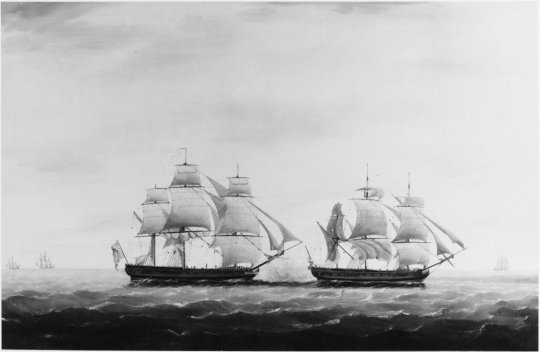
But what happened to Hampshire after that ill-fated cruise on Boston? Did he return home to Wenham and the Dodge farm? Was he properly celebrated as a "Son of Liberty" and granted his freedom from enslavement at last? The reality of Hampshire's fate is not that joyful.
In Wenham, Massachusetts, on April 20, 1778, an ailing Lt. Richard Dodge made out his will. Hampshire is mentioned within--apparently he did return to Wenham after his service on Boston. According to the will, Hampshire, still enslaved, was to be given to Lt. Dodge's son, Capt. Richard Dodge, Jr. upon Lt. Dodge's death.

But Hampshire is not the only enslaved person mentioned in the will. We learn that Lt. Dodge also planned to give an enslaved Black woman named Silve, along with her child, to Lt. Dodge's wife Mary upon his death.

With no context in the will and no supporting records that mention Silve or her child either in the Wenham town records or church records, we do not know what Silve's relationship to Hampshire was. They could very well have been a couple, and the child may have been theirs. If so, the terrible reality was that Lt. Dodge's inevitable death meant their family would be split apart. And on May 11, 1778, the inevitable happened.
On December 15, 1778, Lt. Richard Dodge's probate inventory--a record of all his possessions--was recorded by three Wenham men appointed by the court. Hampshire, Silve, and Silve's child are all there, but recorded as nameless property, with monetary values attached:

Hampshire--nameless here--is highlighted in the above cropped image from Lt. Dodge's probate inventory. The "value" of this man, who was likely a veteran of the Continental Navy during American Revolution, was listed at £20. Such were the brutally dehumanizing effects of slavery in that storied "cradle of liberty," 18th-century Massachusetts.
170 notes
·
View notes
Photo

October 21 1797, the USS Constitution is launched in Boston harbor. The 44-gun naval frigate known as Old Ironsides was never defeated in 42 battles.
147 notes
·
View notes
Photo




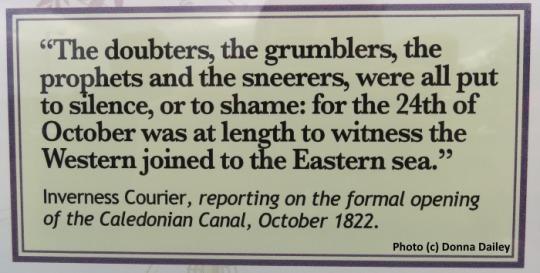

*23rd of October 1822 saw the Caledonian Canal linking Inverness to Fort William open to traffic.
Another one with conflicting dates, some say 30th of the month, another the 24th.
Started in 1803, the Caledonian Canal project was budgeted at £474,531 plus £15,000 for land purchases. A year later they were asked to estimate the cost of making the canal big enough to accommodate the 32-gun and 44-gun frigates of the Royal Navy. With £20,000 allocated for preparatory works and £50,000 a year after that, the canal project was programmed to take 10 years.
The section of canal from Inverness to Loch Ness was opened in the summer of 1818. This allowed the progress of the canal to move quicker as building materials could be brought up from Inverness to Fort Augustus more easily and cheaply.
Finally completed in 1822, the canal has more recently become a popular attraction for visitors and recreation users however is still run and used as a working waterway by Scottish Canals. The total cost of building the canal was £910,000
The canal runs some 60 miles (100 kilometres) from northeast to southwest and reaches 106 feet (32 metres) above sea level. Only one third of the entire length is man-made, the rest being formed by Loch Dochfour, Loch Ness, Loch Oich, and Loch Lochy. These lochs are located in the Great Glen, on a geological fault in the Earth's crust.
There are 29 locks, including eight at Neptune's Staircase, Banavi, four aqueducts and 10 bridges in the course of the canal.
The canal is now a Scheduled Ancient Monument, and attracts over 500,000 visitors each year.There are many ways for tourists to enjoy the canal, such as taking part in the Great Glen Rally, cycling along the tow-paths, or cruising on Hotel Barges.
I hiked part of it in 2020 camping at the canal side, there are wild camping sites that include fire pits, toilets and showers along the way. To use the facilities you “hire” a key from Scottish Canals for just £10 and use it for the duration of your journey. The key can be picked up from Corpach Sea Lock, or you can get it posted out to you.
34 notes
·
View notes
Text
La Fayette and all the times he crossed the Atlantic
For a men as seasick as La Fayette was, he crossed the Atlantic an astonishing number of times. Eight times in total. And keep in mind, sea travel was way more dangerous back in the day, even for well-to-do people.
He departed France for the first time on April 20, 1777 and he and his group of fellow travellers arrived in America on June 13, 1777. They sailed from the harbour of Los Passajes in Spain (there had been some back and forth previously) on the ship La Victoire, the very ship that La Fayette bought and re-named on February 11, 1777.
He returned to France on board the Alliance (a very symbolic name) in 1779. The ship departed the harbour of Boston on January 11, 1779 under the command of her captain Pierre Landais, a Frenchman just like La Fayette. And what a journey it was. There were not enough sailors to sail her and La Fayette refused to send out a press-gang ... that would have went against his moral conscious. So instead, they relied heavily upon deserted and imprisoned British and Irish sailors. The sailors who had deserted the Royal Navy went along rather well, but the sailors who were prisoner of war were not too delighted - so much so that they planned a mutiny. Luckily for La Fayette the mutiny was quelled in the last minute. The ship pulled into the harbour of Brest on February 6, 1779. La Fayette spent the next months in France among his family, friends and fellows at the French court.
He returned to America in 1780 aboard the ship L'Hermione. He departed from the French harbour at Rochefort on March 20, 1780 (the initial plan was to sail on the 10th but bad weather delayed this undertaking) and arrived in Boston harbour on April 26, 1780. The captain of L’Hermione was a Monsieur Latouche-Tréville.
L’Hermione was also the ship that brought La Fayette back to France shortly after the battle of Yorktown. This time he left the harbour of Boston on December 22, 1781 and arrived in France in Lorient on January 20, 1782.
After the conclusion of the War of Independence, Washington invited La Fayette to visit America once more and La Fayette more than happily obliged. He departed from France on June 29, 1784 and arrived in New York harbour on August 4, 1784. After extensively traveling the country he sailed from New York harbour for France on December 23, 1784 on the frigate La Nymphe. He arrived in Brest on January 20, 1785.
His last visit to America was his great Trimphant Tour in 1824/1825. Congress passed a resolution urging then-president James Monroe to invite La Fayette over. He sailed from Le Havre on July 12, 1824 on the American merchant vessel Cadmus. He arrived on August 15, 1824 in New York. After touring every state at that time and several territories at well and more honours than could be expected, he returned home to France a day after his sixty-eight birthday on September 7, 1825. He sailed on the 44-gun frigate Brandywine (originally named Susquehanna) and arrived in back in Le Havre on October 5, 1825.
(Gosh, some of the dates, names and ports were really hard to find …)
#marquis de lafayette#lafayette#general lafayette#george washington#congress#james monroe#ships#french history#american history#american revolution#amrev#french revolution#mutiny#frigate#1777#1779#1780#1781#1782#1784#1785#tour of 1824-1825#1825#boston#charlestown#new york#yorktown#brandywine#le havre#lorient
22 notes
·
View notes
Text

"'Old Ironsides' Crowds Grow; Total of Visitors Yesterday Placed at 19,261; Many More Turned Away at Closing Hour; Legislators Planning Appeal to Entire State."
View of the Goodyear Blimp passing over USS Constitution while she is berthed in San Pedro, California.
Date: February 19, 1933.
Part of the Los Angeles Times Photographic Collection.
UCLA Library Digital Collection: uclamss_1429_4190
#USS CONSTITUTION#Old Ironsides#United States Class#44-gun Frigate#Original 6 frigates#Sailing Ship#Warship#Ship#San Pedro#California#West Coast#February#1933#interwar period#my post
68 notes
·
View notes
Text
Today in History - USS Constitution vs. HMS Guerriere 19. August 1812
On 2 August 1812, the USS Constitution (44guns) set sail from Boston and headed east in the hope of finding some British ships. After failing to encounter any British ships, the Constitution sailed along the coast of Nova Scotia, then to Newfoundland and finally stopped off Cape Race in the Gulf of St Lawrence. Here the Americans captured and burned 2 brigs of little value. On 15 August, the Constitution recaptured an American brig from the British sloop HMS Avenger, but the British ship escaped. Captain Issac Hull put a crew on the brig and sailed her back to an American port.
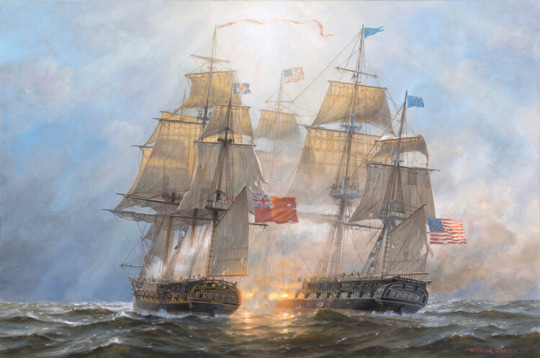
USS Constitution vs HMS Guerriere, by Patrick O'Brien (x)
At 14:00 on 19 August, the crew of the Constitution made out a large sail, which turned out to be the British frigate HMS Guerriere (38guns), led by Captain James Dacres. At 16:30, the two ships began to position themselves and raise their flags. At 17:00, the Guerriere opened fire with her weather guns, with shots hitting the water just ahead of the American ship. They then fired their port broadside, 2 of these shots hitting the American ship, the rest going over and through the rigging. As they prepared to fire again, the Constitution fired her port guns. The two ships were at some distance from each other, and for the next 60 minutes they continued in this manner, with no damage to either ship.
At 18:00 they moved closer together, and by 18:05 the two ships were within pistol range of each other. A furious cannonade began, and at 18:20 the Constitution blew away the Guerriere's mizzenmast. The Constitution came around the Guerriere's bow and fired a heavy barrage that blew away the British frigate's main yard. The Americans approached once more and fired on the Guerriere. The British ship's mizzenmast was now dragging in the water and the two ships came close. The British bow guns damaged the Constitution's great cabin, where a fire even broke out.
It was about here that both crews tried to board the other ship, or at least thought about it. And it was also the place where most of the Constitution's casualties occurred. In fact, both sides suffered heavily from musket fire at this point. On the Guerriere the casualties were much greater. Dacres was shot in the back as he urged his crew to fight. Eventually the ships broke away from each other and then the Guerriere's foremast and mainmast came down, leaving the British ship defenceless.

USS Constitution (44) vs HMS Guerriere (38) in action on the 19th of August, 1812, by Tom Freeman (x)
At 18:30 the Constitution ran down a little and made repairs which took only a few minutes. At 19:00 Hull watched as the Guerriere surrendered, unable to continue the fight.
Guerries's Captain Dacres was escorted aboard the Constitution. Hull refused to accept Dacres' surrender rapier, as he could not accept the rapier of a man who had fought so bravely. He also ordered that Dacres' mother's Bible be returned to him. The Guerriere was clearly sinking, and the wounded were transferred to the Constitution. Hull found that ten impressed Americans had served aboard the Guerriere, but Dacres had allowed them to remain below decks rather than fight their countrymen.
Hull wanted the Guerriere towed in as a prey ship. The Constitution lay with the Guerriere that night, but by daybreak it was clear that the Guerriere could not be salvaged. The prisoners and the American salvage party were taken aboard the Constitution, and at 3 p.m. the Guerriere was set on fire and soon exploded.
Although the Constitution was essentially undamaged and still had two-thirds of its ammunition, the guerrilla's shot became wedged in the frigate's lower masts and the Constitution could not continue her voyage. Hull also wanted to inform the American public of the victory. He reached Boston ten days later, and his message (with the apparent evidence of more than two hundred prisoners of war) provoked cheers. The Guerriere was one of the Royal Navy's most active ships in stopping and searching American merchant ships, and news of her defeat was particularly gratifying to the American seafaring community.
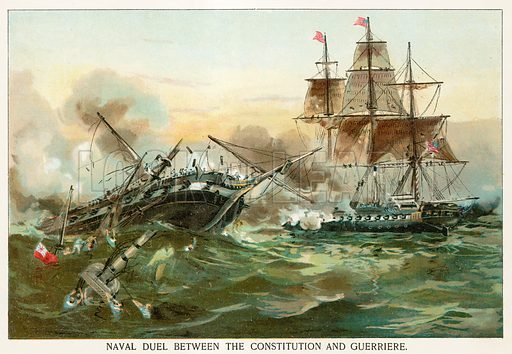
Naval duel between the Constitution and Guerriere. Illustration from Columbus and Columbia (Manufacturers' Book Co, c 1890) (x)
After all the Americans lost 7 men, while the British lost their ship, had 15 killed, 78 wounded 257 captured. This, of course, led to Captain Dacres being court-martialled after his release in a prisoner exchange and his return to Halifax, as was customary in the case of a Royal Navy ship lost for any reason. He put forward as his defence the facts that the Guerriere was originally French-built and therefore not as sturdy as British-built ships, and that the Guerriere was badly decayed and on her way to refit in Halifax at the time, and the fall of the mizzen mast which crippled the Guerriere early in the fight had been due as much to rot as battle damage.There was no suggestion that Dacres and his men had not done their utmost, or that Dacres had been unwise to engage the Constitution. He was therefore honourably acquitted of all blame for the loss.
Dacres continued to serve in the navy after his acquittal, and was promoted to vice-admiral on 20 March 1848. He later died on 4 December 1853.
Hull left Constitution in September 1812, when a death in his family required his attention. He later commanded the Boston, Portsmouth, and Washington navy yards, served on the Board of Naval Commissioners, and commanded the Mediterranean and Pacific Squadrons. He died in Philadelphia on February 13, 1843.
#naval history#today in history#uss contitution vs hms guerriere#19 august 1812#war of 1812#age of sail
56 notes
·
View notes
Photo

U.S. Frigate Constitution, of 44 Guns: William Lynn (artist), Abel Bowen (engraver), c. 1812.
#War of 1812 Wednesday#uss constitution#frigate#age of sail#age of fighting sail#war of 1812#us navy
17 notes
·
View notes
Photo



In Boston Harbor, the 44-gun United States Navy frigate USS Constitution was launched on October 21, 1797.
#Boston Harbor#US Navy frigate#USS Constitution#launched#21 October 1797#225th anniversary#US history#architecture#cityscape#Boston#Massachusetts#New England#engineering#summer 2018#vacation#Boston Common#Trinity Church#Copley Square#tourist attraction#landmark#original photography#ship#travel
4 notes
·
View notes
Text
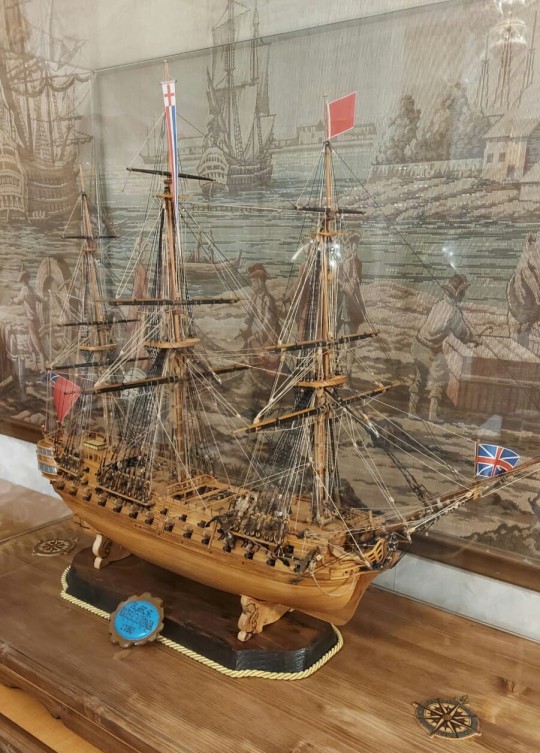
HMS Bellona - by Capitan-Blood
HMS Bellona 1760
The HMS (His Majesty's Ship) Bellona was one of the most famous 74-gun ships of the British Navy. The 74-gun ship formed the backbone of the principal naval powers of Europe from the Seven Years War (1756-1763) until the end of the Napoleonic Wars (1815). In fact, compared with the less-armed lower classes, and the 80-gun ships, structurally unstable, the 74s were considered the ideal compromise between gun power and manoeuvrability.
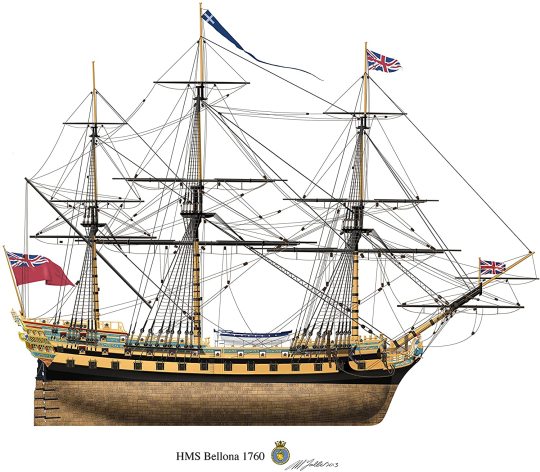
Launched from the French shipyards in the 1730s, the first 74-gun vessels, although structurally weak (like many of the ships built in France at that time), immediately showed their superiority in comparison with the British ships then employed in similar operative roles. After the capture of several French 74s during the two Battles of Finisterre in 1747, the British Admiralty began in 1755, under the Surveyor Thomas Slade, the construction of the first ships of that type, the Dublin class. Three more ships, the Hero, Hercules and Thunderer, were ordered the following year.

Sir Thomas Slade: 1703-1771) was a British engineer, builder of certain classes of ship and responsible for the construction of many units of the Royal Navy. He held the post of Surveyor of the Navy from 1755 to 1771. He was the builder of the 100-gun HMS Victory vessel.
The Bellona, together with the Dragon and Superb, was commissioned on 28 December 1757; Slade's draught was produced on 31 January 1758. The construction of the Bellona began at Chatham shipyards in the same year, on 10 May. The Bellona, launched on 19 February 1760, sailed, on 8 April, to join the battlefleet which was then blockading Brest.

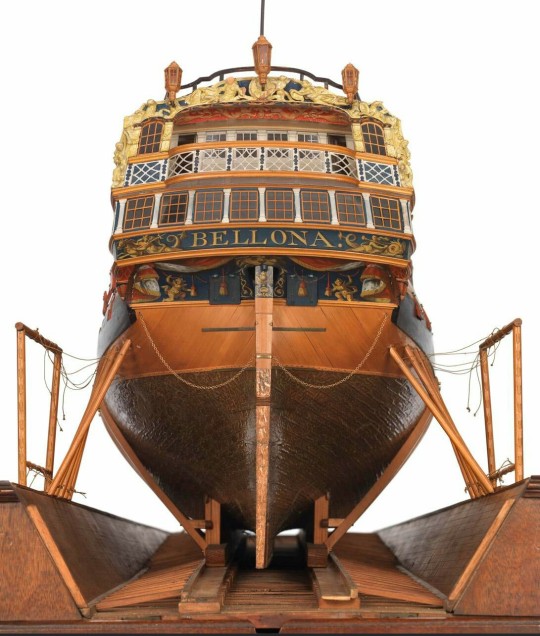
HMS Bellona- the National Maritime Museum, Greenwich.
In May 1761 she was detached to patrol off the River Tagus; on 13 August at 3pm, the Bellona , in the company of the frigate Brilliant, sighted a small French squadron, constituted by the 74-gun ship Courageux and the frigates Mauliceuse and Hermione. Aftera long chase, the following morning at 5 the Bellona reached the Courageux and fought it, while the Brilliant engaged the two frigates.

HMS Bellona captured French ship Courageux. Drawn by H. Fletcher c.1890.
Two hours later, the Courageux. Owing to the terrible damages suffered, struck her colours; severely damaged, neither of the British ships was in any condition to pursue the two frigates, so they were able to make good their escape. Having been properly repaired, the Bellona was fitted as a guardship at Portsmouth until 1770; in 1771 she sailed to Chatham; there , she was laid up in ordinary, with guns and rigging removed, until 1778, when she was docked and began a major repair. Particularly, the poopdeck bulwark was modified: 6 short-barrel guns of new conception, the first carronades, were fitted on it. In March 1780, her bottom was coppered for the first time.
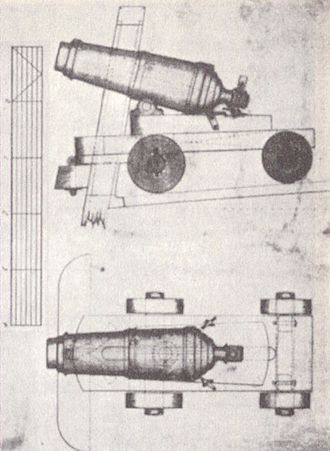
In the same year, on 30 December, the Bellona took part in the capture of the 44-gun Dutch ship Princess Caroline; then she cruised off Gibraltar, in the North Sea and the West Indies. From 1783 to 1791 she was laid up at Portsmouth again; after further repairs at Chatham, in 1793 she joined Admiral Howe's fleet in the Channel.

Until 1797 the Bellona operated in the West Indies again, against the French fleet, and in the Baltic; in 1801 she could take no part in the Battle of Copenahagen, because she was grounded just outside the scene of the action. She was employed in the blockade of Cadiz; then, the Bellona was at Jamaica, at Portsmouth again and at Barbados. In 1806 she took part in the chase of the Foudroyant and the destruction of the 74-gun Impetueux, both French Ships. Although more than 50 years from her launch were passed, the Bellona served in the Navy until February 1814; she was broken up at Chatham in September 1814.

NOTE: Bellona, no name was more appropriate; but who was she?

Bronze bust of the goddess Bellona - Museo Rodin, Paris.
Ancient Rome gave great consideration to its goddess of war, Bellona. Often described as the female shadow of Mars, she was much more as her Kingdom encompassed all aspects of the conflict, diplomatic and military. Even her name shows importance, since in Latin 'bellum' means war, from the name of this goddess.
10 notes
·
View notes